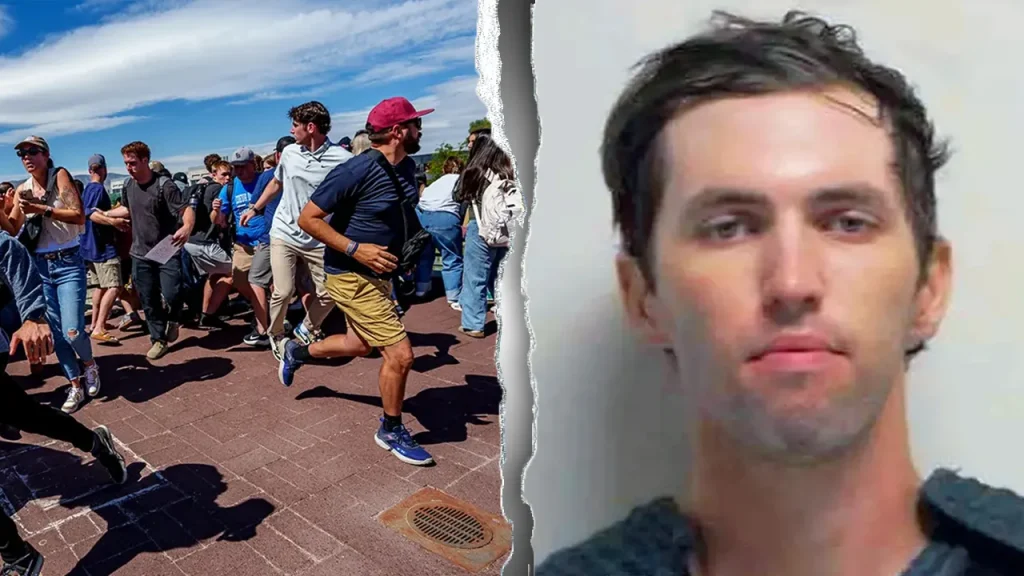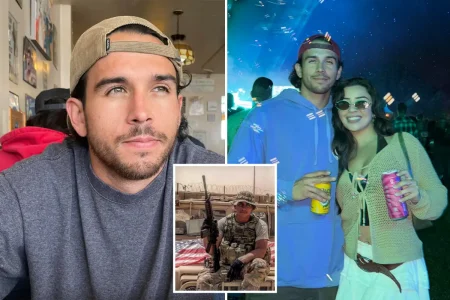The Fatal Day: Tyler Robinson’s Involvement in Charlie Kirk’s Assassination
In the quiet college town of Orem, Utah, a shocking assassination took place that would send ripples throughout the political landscape of America. On September 10, 22-year-old Tyler Robinson allegedly shot and killed Charlie Kirk, the founder of Turning Point USA, during a speaking event at Utah Valley University. According to exclusive reports, the tragedy unfolded as Kirk engaged with audience members, when a sniper’s bullet struck him in the neck. The aftermath has revealed a trail of evidence and a suspect who, according to law enforcement sources, was thwarted in his attempt to recover his weapon after the shooting. This case, with its planned execution and subsequent attempted escape, has left investigators piecing together a complex timeline as they build what may become a potential death penalty case.
The investigation took a critical turn approximately six hours after the shooting, around 6:30 PM, when Robinson reportedly “made contact” with a police officer near the wooded area where authorities later discovered the alleged murder weapon. This chance encounter appears to have prevented Robinson from retrieving the Mauser .30-06 rifle that prosecutors believe was used to kill Kirk. The rifle was found wrapped in a towel at the edge of the campus, where law enforcement had established a perimeter following the lockdown. This detail highlights the tension of those crucial hours after the shooting, as the suspect lingered in the area while a massive police response unfolded around him. The encounter with the officer marks a pivotal moment that potentially preserved key evidence in the case against Robinson.
Court documents have revealed text messages between Robinson and his roommate, Lance Twiggs, that provide disturbing insight into the suspect’s mindset and actions following the shooting. In these messages, Robinson allegedly discussed his need to retrieve “his rifle” before returning home to Washington County, approximately four hours away from Orem. When Twiggs questioned Robinson about his involvement, Robinson allegedly confessed, “I am, I’m sorry.” The exchange continued with Robinson explaining how he had evaded capture: “No, they grabbed some crazy old dude, then interrogated someone in similar clothing.” He further detailed his frustration at being unable to recover the weapon: “I had planned to grab my rifle from my drop point shortly after, but most of that side of town got locked down.” These messages, which prosecutors have partially released, suggest both premeditation and Robinson’s awareness of the gravity of his actions.
Perhaps most chilling among the evidence was a note that Robinson had allegedly left under his keyboard at home, which read, “I had the opportunity to take out Charlie Kirk, and I’m going to take it.” This note was discovered by Twiggs after Robinson texted him to “look under my keyboard” as authorities were searching the area around the university. The note, coupled with Robinson’s subsequent text messages expressing regret that he couldn’t “keep this secret till I died of old age,” paints a picture of a planned assassination rather than a spontaneous act of violence. Robinson’s concern about retrieving what he referred to as “grandpa’s rifle” further suggests personal connections to the weapon used and potential insight into his background and motivations that investigators are likely exploring as they build their case.
The manhunt for Robinson concluded 33 hours after Kirk’s killing, when the suspect surrendered to authorities in his hometown in southern Utah. This surrender came not through traditional police work, but through the intervention of Robinson’s parents and a family friend, who convinced him to turn himself in rather than take his own life. This human element adds complexity to the case, suggesting that despite allegedly committing a calculated political assassination, Robinson maintained connections to family who ultimately influenced his decision to surrender. The circumstances of this surrender provide investigators with additional context about Robinson, described by local residents as “very quiet,” as they piece together not just his actions but his motivations in targeting Kirk, a prominent conservative activist.
As the legal process moves forward, prosecutors are preparing what could become a death penalty case against Robinson on charges including aggravated murder. The evidence collected—the rifle, the text messages, the written note, and the timeline of events—forms the foundation of the case against him. Yet many questions remain unanswered about how Robinson selected his target, planned the attack, and what ideological motivations may have driven him to violence. The assassination of Charlie Kirk represents not just a personal tragedy but also raises broader concerns about political violence in America. As investigators continue their work and the legal proceedings unfold, both Kirk’s supporters and the broader public will be watching closely to understand how a speaking event at a university campus became the site of a targeted killing that has left a community stunned and a nation grappling with the implications of such a brazen political assassination.











